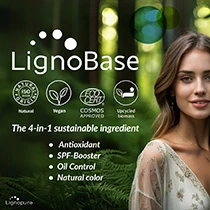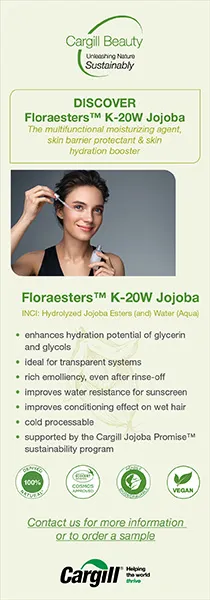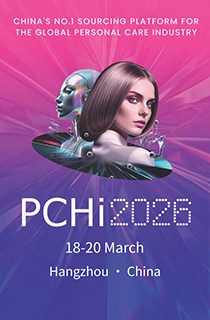Organ-on-a-chip technologies show potential to replace cosmetic animal testing

A study has demonstrated how human organ-on-a-chip technologies have the potential to replace animal testing in cosmetics. The research shows how personal care products can be evaluated for toxicity more ethically, with faster results compared to traditional cosmetics testing.
The organ-on-a-chip technology works by creating and sustaining a 3D cell environment that mimics the activities of a human organ, such as the skin.
The new study, published in The Royal Society of Chemistry, explores how microfluidic testing on organ-on-a-chip technology can remove the need for unethical safety testing in the industry.
Cosmetic testing checks for adulterants — harmful chemicals, including heavy metals and microbial contaminants. While these additives improve the fragrance, color, texture, or lifespan of cosmetics, multiple health risks are associated with their exposure.
The study stresses that 90% of general animal tests, including for cosmetics, fail when it comes to human testing, claiming the lives of animals without gaining any results.
Additionally, while animal testing is widely banned, some countries still require tests to be performed on rodents before moving on to other animals such as frogs, cats, dogs, monkeys, and birds.
The personal care industry is innovating for alternatives to animal testing, and the organ-on-a-chip positions itself as an ethical option with more precise and safer results, as the effects on the human body can be observed directly.
 The study stresses that 90% of animal tests fail when it comes to human testing.Diving into the organ-on-a-chip
The study stresses that 90% of animal tests fail when it comes to human testing.Diving into the organ-on-a-chip
The study mentions that commonly used methods to detect adulterants are often expensive, time-consuming, and require technical expertise. This increases the likelihood of error and extends the analysis time.
The latest organ-on-a-chip technology aims to sustain cells and create a live 3D microenvironment of cells that mimics “the real state of the body.” The chip provides a human-specific microenvironment for testing, making it more precise, safe, and ethical.
The chip comes in two forms: a single-organ system, which evaluates a compound effect on a single organ, and a multi-organ system, which understands the interaction of at least two organs through reactions, metabolites, or signaling.
Efficient combination
The study says microfluidic methods are much quicker than traditional approaches. Combined with the organ-on-a-chip model, they are less expensive, more efficient, and more sustainable for testing cosmetics.
“Microfluidic technologies employ the manipulation of small volumes of fluids, using channels for testing and analyzing fluidic interactions on a small scale. Its countless customizable properties, ease of use, and miniaturizations in microfluidics allow for the sustainable performance of experiments and the generation of efficient and reliable data, even with a small volume of substances, effectively and quickly,” details the study.
When using paper-based microfluidics, the paper is used as a medium to perform microfluidic assays, and operates on natural capillary action produced by the intermolecular interactions between the liquid and the cellulose fibers of the paper. This allows the liquid to flow through the pores, without the assistance of additional pumps.
By combining the technology and microfluidics, the mixing rates are also faster, allowing for faster responses and more control over the liquids.
Harmful cosmetic chemicals The chip provides a human-specific microenvironment for testing, making it more precise, safe, and ethical.
The chip provides a human-specific microenvironment for testing, making it more precise, safe, and ethical.
The adulterants observed in the study were preservatives, fragrances, and other concerning chemicals.
Preservatives, including formaldehyde and parabens, have been shown to cause cancer and hypersensitivity. Additionally, chemicals used for UV protection, such as benzophenone-3 and benzophenone-1, may lead to alterations in behavioral development and cause congenital malformations when used in excessive quantities, stress the authors.
When used excessively, fragrances can cause skin sensitivity, irritation, and allergies. Lightening creams, sunscreen, lipsticks, and other commonly used cosmetics products have also been found to contain heavy metal residues, such as chromium, cadmium, nickel, iron, and lead.
The study notes that sunscreens commonly contain nickel, lead, and chromium, while lipsticks usually contain a high level of iron. Parabens — another harmful ingredient with physiochemical properties — have also been proven to cause breast cancer.
Parabens, phthalates, microplastics, benzophenones, and certain metals have previously been linked to neurotoxic congenital disabilities in newborn children when used during pregnancy by the mother, the authors stress.
They conclude that this technology is a “microfluidic milestone,” as together, they empower consumers and regulatory bodies to test products efficiently and ethically backed by scientific validity.
“The integration of these technologies can proceed in the future with artificial intelligence and automation tools for point-of-care detection of adulterants using computerized scanners,” the authors conclude.












